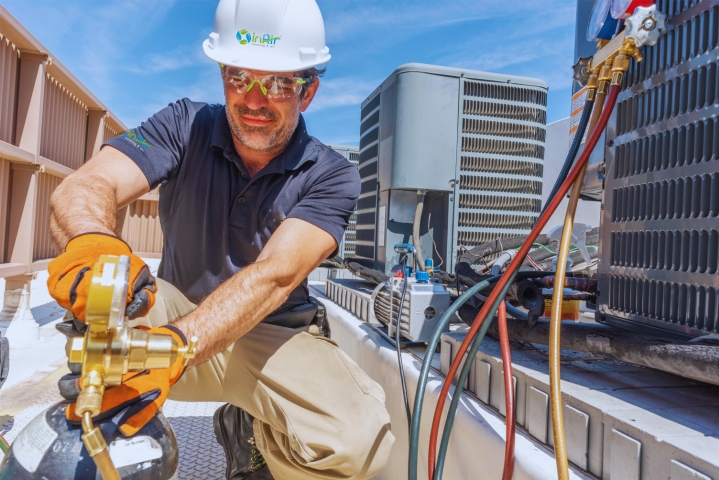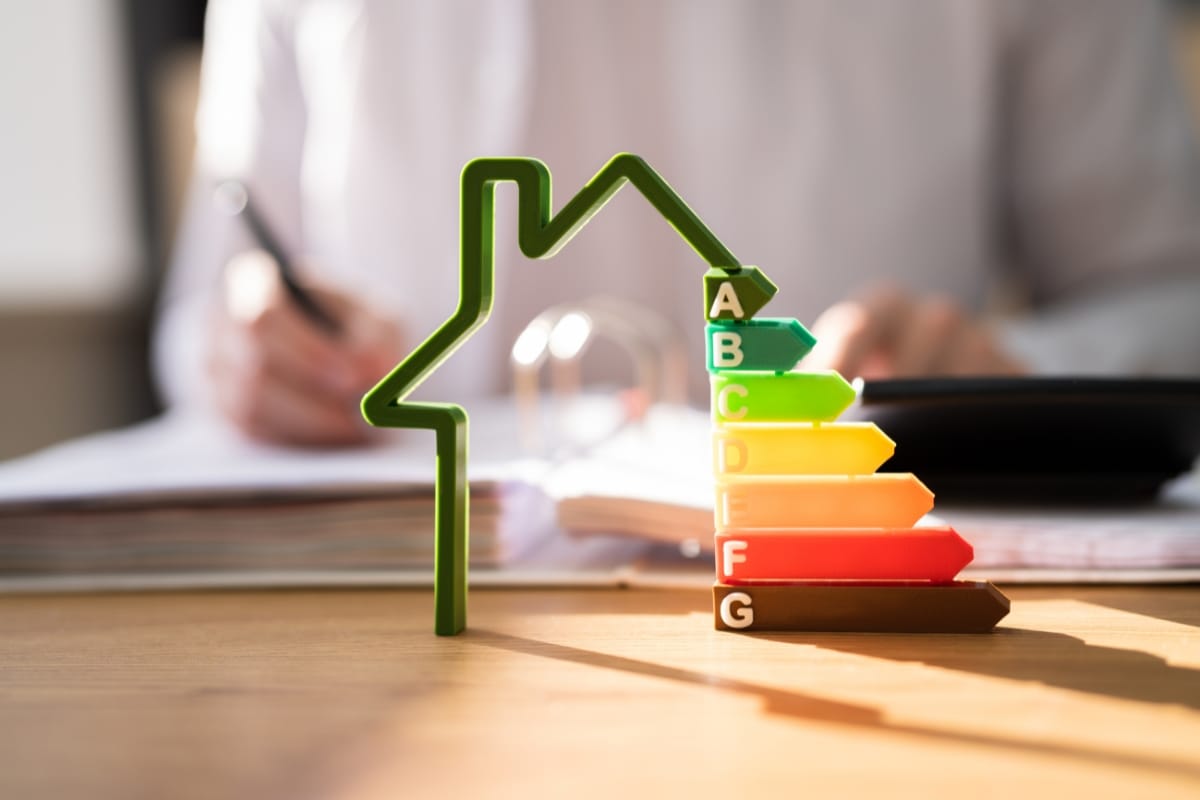Smart HVAC systems are transforming the way we experience comfort and manage energy efficiency in our homes and workplaces. By utilizing advanced technology, these systems can automatically adjust temperature settings, monitor air quality, and reduce energy consumption—all while providing personalized comfort.
From smart thermostats to integrated sensors, smart HVAC systems are designed to optimize performance, lower utility bills, and make everyday living more convenient. In this guide, we’ll explore how smart HVAC systems are revolutionizing both comfort and efficiency, making them a game-changer for modern homes and businesses.
Whether you’re looking to upgrade your current system or curious about the benefits, discover how smart HVAC solutions can enhance your environment and simplify your life.
Upgrade Your Lifestyle with Smart HVAC Systems
Understanding Smart HVAC Systems: A Fusion of Technology and Comfort

Smart HVAC systems are more than just a thermostat on the wall. They are a fusion of technology and comfort, designed to revolutionize the way we experience heating, ventilation, and air conditioning in our homes. These systems utilize advanced sensors, intelligent algorithms, and real-time data analytics to create personalized comfort solutions while optimizing energy efficiency.
At the heart of a smart HVAC system is its ability to learn and adapt to your preferences. By leveraging machine learning algorithms, these systems can analyze your usage patterns and adjust temperature settings accordingly.
For example, if you tend to lower the temperature at night for better sleep, the system will automatically make that adjustment for you. Over time, it becomes attuned to your habits and creates a comfortable environment without you having to manually tweak the settings.
But it’s not just about convenience. Smart HVAC systems also play a crucial role in reducing our carbon footprint. By integrating IoT technology, these systems can communicate with other smart devices in your home, such as lighting and appliances. This allows for seamless automation and optimization of energy usage. For instance, if no one is home during the day, the system can adjust the temperature accordingly to save energy.
Benefits of Smart HVAC Systems for Homeowners

Smart HVAC systems offer homeowners far-reaching benefits that go beyond basic comfort and energy efficiency. These systems are designed to optimize energy consumption through real-time data analytics, significantly reducing monthly utility bills and minimizing energy waste.
The ability to adjust settings based on occupancy patterns and weather forecasts allows for more precise heating and cooling, making these systems more cost-effective in the long run.
Beyond the financial savings, smart HVAC systems also enhance indoor air quality. Equipped with advanced filtration technologies, these systems can trap dust, allergens, and even harmful volatile organic compounds (VOCs). For households with individuals suffering from allergies, asthma, or other respiratory conditions, the improved air quality can make a noticeable difference in overall health and comfort.
Another major advantage is the convenience of remote access and control. Through dedicated smartphone apps or online platforms, homeowners can manage their HVAC settings from anywhere, whether they’re on vacation or simply at work.
This not only provides peace of mind but also ensures that the home remains at an optimal temperature, conserving energy when you’re away and providing comfort upon your return. Furthermore, remote monitoring can alert you to any potential issues or maintenance needs, helping to prevent costly repairs and ensure your system runs smoothly year-round.
Energy Efficiency at Its Best: How Smart HVAC Systems Reduce Carbon Footprint

One of the most significant benefits of smart HVAC systems is their ability to optimize energy use and drastically reduce a home’s carbon footprint. Traditional systems are often inefficient, running on preset schedules regardless of whether anyone is home or if certain rooms are unoccupied. This leads to unnecessary energy consumption and higher utility bills.
Smart HVAC systems, on the other hand, are designed with advanced sensors and real-time data analytics, enabling them to detect when heating or cooling is truly needed.
Occupancy sensors can identify whether a room is in use and automatically adjust the temperature. This targeted climate control prevents energy waste, ensuring that energy is only consumed when it’s genuinely required.
Additionally, these systems integrate with weather forecasting technology, allowing them to adjust settings proactively. For instance, on an especially hot day, a smart HVAC system may start cooling your home slightly earlier to avoid excessive energy consumption during peak hours. This preemptive adjustment reduces strain on the grid and lowers the overall energy demand.
Beyond the immediate benefits of energy savings and cost reduction, smart HVAC systems contribute significantly to reducing carbon emissions, playing a critical role in sustainable home management. By minimizing energy waste, these systems support greener living and help combat the growing environmental concerns associated with excessive energy use.
The Role of IoT Integration in Smart HVAC Systems

The integration of the Internet of Things (IoT) has transformed the functionality and capabilities of smart HVAC systems, allowing them to become more responsive, intuitive, and user-friendly. Through IoT connectivity, these systems are able to communicate with other smart devices in the home, enhancing both convenience and energy management.
One of the key advantages of IoT in HVAC systems is the ability to control and monitor the system remotely via smartphone apps or voice-activated devices like Amazon Alexa or Google Assistant. This means homeowners can adjust the temperature settings, monitor real-time energy consumption, or even schedule system maintenance alerts, all from the palm of their hand. This level of control ensures that energy is never wasted, even when you’re away from home.
In addition to real-time control, IoT integration allows the HVAC system to make smarter, data-driven decisions. By continuously collecting information from weather forecasts, occupancy patterns, and even humidity levels, the system can adjust itself proactively. For instance, it may lower the temperature before you arrive home on a hot day or reduce heating in unoccupied rooms, improving overall efficiency.
Moreover, IoT-enabled HVAC systems create personalized comfort zones throughout the house. Each room can be equipped with sensors that measure occupancy and individual preferences. This allows the system to deliver custom heating or cooling to specific areas based on usage, without wasting energy in unused spaces. This technology not only enhances comfort but also significantly boosts the system’s energy efficiency, ultimately reducing utility costs.
Machine Learning Algorithms: Personalized Comfort Solutions

Machine learning algorithms play a transformative role in smart HVAC systems by enabling them to deliver highly personalized comfort solutions. These advanced algorithms continuously learn from user behavior, preferences, and environmental factors, allowing the system to adapt dynamically and optimize comfort throughout the home.
For instance, if you prefer cooler temperatures in the bedroom for a better night’s sleep but enjoy a warmer living space during the day, the machine learning algorithms will recognize and memorize these preferences.
Over time, the system will automatically adjust the temperature in each room based on these specific needs, eliminating the need for constant manual intervention. The system can even factor in external conditions, such as the current weather or seasonal changes, to refine temperature settings further.
Additionally, these algorithms offer predictive capabilities. By analyzing historical data and future weather forecasts, a smart HVAC system can preemptively adjust its settings. If a cold front is predicted, for example, the system may start warming the house in advance, ensuring that the indoor climate remains consistent and comfortable without excessive energy use. This not only enhances user comfort but also maximizes energy efficiency by preventing unnecessary heating or cooling.
In the long run, machine learning allows HVAC systems to evolve with the household’s lifestyle patterns, making home environments more intuitive and adaptive, ultimately contributing to significant energy savings while enhancing overall comfort.
Real-Time Data Analytics: Optimizing Performance and Savings

Real-time data analytics serve as the backbone of smart HVAC systems, offering a continuous flow of insights that optimize both system performance and energy savings. These advanced systems are equipped with sensors that gather data on temperature, humidity, occupancy, and even equipment status, allowing for rapid adjustments and highly efficient climate control.
One of the primary benefits of real-time data analytics is the system’s ability to react instantly to environmental or occupancy changes. For example, if a room is unoccupied, the system can reduce heating or cooling to conserve energy. When someone enters the space, it adjusts the temperature to a preset comfort level almost immediately. This real-time responsiveness not only maximizes comfort but also minimizes unnecessary energy use.
Additionally, real-time monitoring can detect potential equipment issues before they escalate. If a component isn’t operating efficiently or is at risk of malfunction, the system can send an alert, allowing homeowners or service technicians to address the problem promptly, reducing downtime and costly repairs.
Beyond immediate adjustments, real-time data analytics offer long-term benefits by tracking energy consumption patterns. Homeowners can review daily, weekly, or monthly energy reports to pinpoint inefficiencies and make informed decisions about further optimizing their HVAC usage.
By analyzing trends such as peak usage times or the impact of outdoor temperature fluctuations, homeowners can implement strategies like adjusting their thermostat settings during non-peak hours, contributing to significant cost savings and reducing their carbon footprint.
Incorporating real-time data analytics thus transforms smart HVAC systems into proactive tools that not only enhance comfort but also actively promote energy efficiency and sustainability.
Seamless Automation: Enhancing User Experience in Smart HVAC Systems

Seamless automation is one of the defining features that make smart HVAC systems stand out, delivering unparalleled convenience and energy efficiency. These systems go beyond basic temperature control, automating numerous processes that once required constant attention, allowing homeowners to enjoy comfort without having to manually adjust settings.
For example, through occupancy sensors, smart HVAC systems can detect when rooms are vacant and automatically lower heating or cooling output, ensuring energy is not wasted on unoccupied spaces.
When occupants return, the system quickly restores the pre-set temperature for a seamless transition between energy conservation and comfort. This is particularly valuable in larger homes where managing individual room temperatures manually would be tedious.
Furthermore, these systems can learn your preferences over time, leveraging data from daily routines to predict and automate future adjustments.
Beyond occupancy-based automation, smart HVAC systems can integrate with other connected devices in your home ecosystem, like smart lighting or entertainment systems. You could design custom scenarios such as setting your HVAC to lower the temperature while simultaneously dimming the lights and activating “Do Not Disturb” mode on your phone when you settle in for a movie night.
This kind of integration enhances not just comfort but efficiency, ensuring that all elements of your home’s environment work together harmoniously. In essence, seamless automation helps simplify daily tasks, reduce energy usage, and tailor the home experience to individual preferences, making smart HVAC systems a vital part of modern living.
Smart HVAC Systems vs. Traditional HVAC Systems: A Comparative Analysis

When comparing smart HVAC systems to traditional HVAC systems, the advancements in technology and convenience offered by smart systems become clear. Traditional HVAC systems operate on fixed schedules, often needing manual adjustments to maintain comfort.
This can be inconvenient, especially when you forget to adjust the thermostat before leaving the house or during sudden temperature changes. Smart HVAC systems, on the other hand, learn your behavior and preferences, automatically adjusting the environment based on real-time conditions, such as whether rooms are occupied or what the outdoor weather is like.
A major advantage of smart systems is the ability to control them remotely. With a smartphone app, homeowners can monitor and change settings from anywhere, whether they’re at work or on vacation. This flexibility is absent in traditional systems, where physical access to the thermostat is necessary.
The energy efficiency gains with smart HVAC systems are another significant advantage. By using real-time data analytics, machine learning, and even weather forecasting, smart HVAC systems optimize their operations to minimize energy consumption.
For instance, they can adjust the temperature based on occupancy or even pre-cool the house during off-peak energy hours. Traditional systems, however, tend to run based on preset schedules, often wasting energy by heating or cooling empty spaces.
Moreover, smart systems also offer insights into energy consumption, allowing users to track usage patterns and identify areas where they can make improvements.
Traditional systems, lacking these advanced features, are far less efficient, resulting in higher energy bills and a larger environmental impact. By embracing smart HVAC technology, homeowners gain not only in comfort and convenience but also in cost savings and sustainability.
Investing in the Future: Cost Considerations and Long-Term Savings

While the upfront cost of a smart HVAC system may be higher than that of a traditional system, it’s crucial to evaluate the long-term financial benefits and efficiency gains.
Smart HVAC systems are engineered to optimize energy consumption by adapting to real-time conditions and usage patterns, leading to significant reductions in energy bills. Over time, these savings can offset the initial investment, making the system a cost-effective choice for homeowners focused on reducing their utility expenses.
Beyond immediate energy savings, smart HVAC systems can extend the lifespan of your equipment. By using real-time data analytics to monitor performance, they can detect minor issues before they escalate into costly repairs. This proactive approach to maintenance reduces wear and tear on the system, preventing breakdowns and enhancing the longevity of the equipment.
Additionally, investing in a smart HVAC system can increase the resale value of your home. As more homebuyers prioritize energy efficiency and sustainability, homes equipped with advanced smart systems become more desirable. In an increasingly eco-conscious real estate market, features like energy-efficient HVAC systems can make your property stand out, giving you an edge over competing listings.
Conclusion: Embracing a Sustainable and Comfortable Lifestyle with Smart HVAC Systems
Smart HVAC systems are transforming the way we experience comfort and efficiency at home and in the workplace. Whether it’s waking up to the perfect temperature or enjoying seamless automation throughout your home, these systems offer a new standard of living that is both sustainable and comfortable.
With advanced technology designed to optimize energy use while maintaining perfect indoor conditions, it’s the future of climate control. For reliable HVAC solutions that elevate your comfort, choose inAir Heating & Air. Contact us today at (770) 233 7777 or visit our website to fill out a request for an HVAC service and take the first step towards a more efficient home.
















